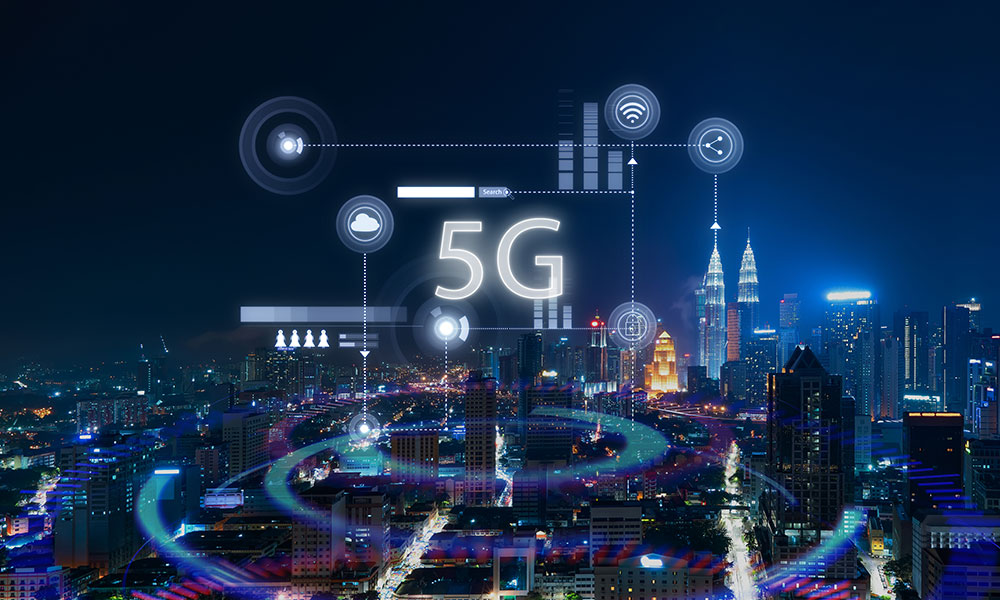As the digital world continues to evolve, the next big leap in mobile and internet technology is already on the horizon: 5G and its potential successors. With 5G networks expanding rapidly, the tech industry is poised for a revolution in how we connect, work, and interact with technology. But what does 5G mean for you, and how will it shape the future? Let’s dive in.
What is 5G, and Why Does It Matter?
5G refers to the fifth generation of mobile network technology, offering significantly faster speeds, lower latency, and the ability to support a greater number of connected devices simultaneously. This leap in connectivity is poised to enable everything from faster streaming to real-time virtual experiences.
One of the standout features of 5G is its ultra-low latency, which means that the time between sending and receiving data is reduced to milliseconds. This is especially important for applications that require real-time communication, such as remote surgery or autonomous vehicles. Additionally, 5G's bandwidth is designed to handle many more devices at once, which is crucial for the future growth of the Internet of Things (IoT).
5G's Role in the Smart City Revolution
One of the most exciting applications of 5G is in the development of smart cities. Cities around the world are increasingly adopting connected infrastructure, from traffic lights that adjust based on real-time traffic data to smart waste management systems. With the increased bandwidth and low latency of 5G, these systems can function more efficiently and respond to changes instantaneously. For example, smart traffic lights can adjust the flow of traffic in real-time based on congestion data, making travel more efficient and reducing emissions.
The integration of 5G-powered IoT devices will also play a key role in optimizing utilities, improving public services, and enhancing the overall quality of life in urban areas. According to experts, smart cities powered by 5G could become more energy-efficient, safer, and more sustainable.
5G and the Future of Remote Work and Education
The COVID-19 pandemic highlighted the importance of reliable, high-speed internet, and 5G is positioned to support the growing demand for remote work and learning. With its faster speeds, 5G will enable smoother video conferences, real-time collaboration tools, and cloud-based applications that can be accessed from anywhere without lag.
Furthermore, 5G networks could enhance virtual and augmented reality (VR/AR) experiences, making them more immersive and accessible for education and business purposes. Imagine attending a virtual class where you can interact with 3D models of ancient civilizations or collaborating with colleagues across the globe in a fully immersive virtual office environment.
5G and the Rise of Autonomous Vehicles
One of the most anticipated uses for 5G is in the field of autonomous vehicles. The ultra-low latency of 5G networks will allow vehicles to communicate with each other and with surrounding infrastructure, such as traffic lights and road sensors, in real-time. This could be critical for the safety and functionality of self-driving cars, allowing them to respond to potential hazards immediately. With 5G as the backbone, autonomous vehicles could become safer, more efficient, and more reliable as they make their way to mainstream use.
Looking Beyond 5G: What’s Next?
While 5G is still being deployed around the world, the conversation is already turning to 6G. Researchers are exploring ways to make the internet even faster, more reliable, and more integrated with AI and machine learning. 6G is expected to enhance current technologies like virtual reality (VR), augmented reality (AR), and even provide holographic communication capabilities.
Though it’s still in the early research phase, 6G could take connectivity to a whole new level, delivering even lower latency, higher data throughput, and more seamless integration with the physical world. This could lead to applications like holographic calls or AI-powered smart cities with near-instantaneous data processing and communication.
Conclusion
The rollout of 5G networks is just the beginning of a new era of connectivity. From smart cities and autonomous vehicles to remote work and education, the potential applications are vast. As 5G technology continues to mature and the industry begins to look toward 6G, the future of how we connect and interact with the world around us is incredibly exciting.
The transformation that 5G and beyond will bring to our lives is already underway, and we are just starting to scratch the surface of its capabilities. Keep an eye on the evolution of this technology, as it will likely change how we experience the digital world in profound ways.
For more information on 5G and its applications, you can visit tech sites and articles that track these developments in real time.












0 Commentaires